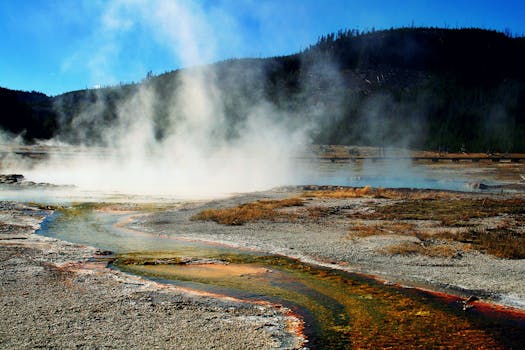Advanced Geothermal Energy: Deep-Sea Drilling for Clean Energy
As the world grapples with the pressing need for sustainable energy solutions, advanced geothermal energy is emerging as a promising contender. This innovative approach harnesses the Earth’s natural heat, particularly through deep-sea drilling, to provide a clean and reliable energy source. This article explores the potential of advanced geothermal energy, its benefits, challenges, and real-world applications.
The Basics of Geothermal Energy
Geothermal energy is derived from the Earth’s internal heat, which can be found in various forms, including steam, hot water, and hot rocks. Traditional geothermal energy extraction typically occurs in areas with high volcanic activity, such as Iceland and parts of the United States. However, advanced geothermal energy expands this concept by tapping into deeper geological formations, including those found beneath the ocean floor.
Deep-Sea Drilling: A Game Changer
Deep-sea drilling involves accessing geothermal resources located beneath the ocean, where temperatures can reach levels sufficient for energy production. This method offers several advantages:
- Abundant Resources: The ocean covers over 70% of the Earth’s surface, providing vast untapped geothermal potential.
- Reduced Land Use: By utilizing underwater resources, deep-sea drilling minimizes the environmental impact on terrestrial ecosystems.
- Consistent Energy Supply: Oceanic geothermal sources can provide a stable and continuous energy supply, unlike some renewable sources that are weather-dependent.
Technological Innovations Driving Deep-Sea Geothermal Energy
Recent advancements in technology have made deep-sea geothermal energy extraction more feasible. Key innovations include:
- Enhanced Drilling Techniques: Technologies such as rotary drilling and advanced robotics allow for more efficient and precise drilling operations in challenging underwater environments.
- Improved Heat Exchange Systems: New materials and designs for heat exchangers enhance the efficiency of energy conversion from geothermal sources.
- Data Analytics and Modeling: Advanced computational models help predict geothermal resource locations and optimize drilling strategies, reducing costs and risks.
Case Studies: Successful Implementations
Several projects around the world have successfully demonstrated the viability of advanced geothermal energy through deep-sea drilling:
- The Japan Deep-Sea Geothermal Project: Initiated in 2018, this project aims to explore geothermal resources in the Nankai Trough. Early results indicate promising temperatures that could support energy production.
- The Geothermal Energy Research Project in the Caribbean: This initiative focuses on utilizing geothermal resources in volcanic regions, with plans to extend exploration into offshore areas.
- The Iceland Deep Drilling Project: Although primarily land-based, this project has laid the groundwork for future underwater geothermal exploration, showcasing the potential of deep drilling techniques.
Challenges and Considerations
Despite its potential, deep-sea geothermal energy faces several challenges:
- High Initial Costs: The technology and infrastructure required for deep-sea drilling can be expensive, posing a barrier to entry for many companies.
- Environmental Concerns: While deep-sea drilling minimizes land use, it can still impact marine ecosystems, necessitating careful environmental assessments.
- Regulatory Hurdles: Navigating the complex regulatory landscape for offshore drilling can slow down project development.
The Future of Advanced Geothermal Energy
The future of advanced geothermal energy, particularly through deep-sea drilling, looks promising. As technology continues to evolve and the demand for clean energy grows, investments in this sector are likely to increase. Governments and private entities are beginning to recognize the potential of geothermal energy as a key player in the transition to a sustainable energy future.
Conclusion
Advanced geothermal energy, particularly through deep-sea drilling, represents a significant opportunity to harness the Earth’s natural heat for clean energy production. With abundant resources, technological innovations, and successful case studies paving the way, this approach could play a crucial role in meeting global energy demands while minimizing environmental impact. However, addressing the challenges associated with cost, environmental concerns, and regulatory frameworks will be essential for realizing its full potential. As we move towards a more sustainable future, deep-sea geothermal energy stands out as a viable and promising solution.
